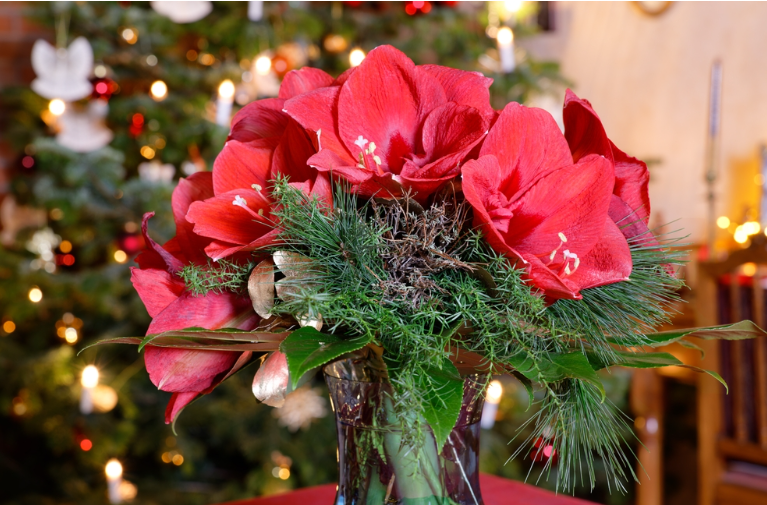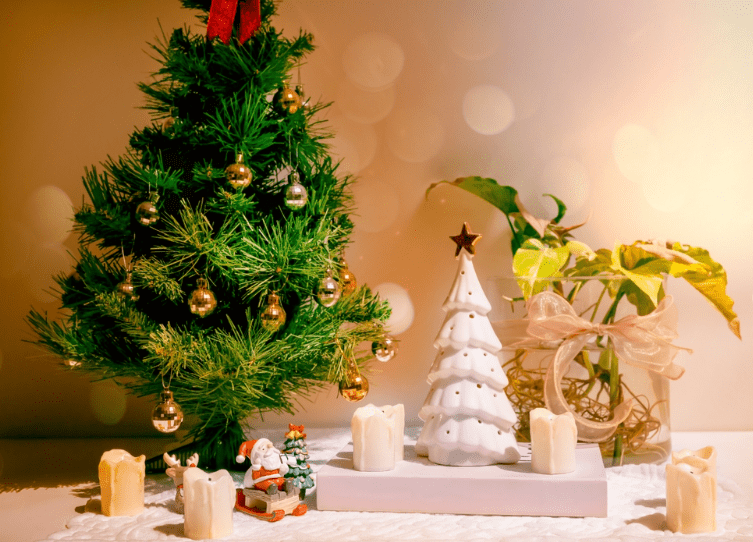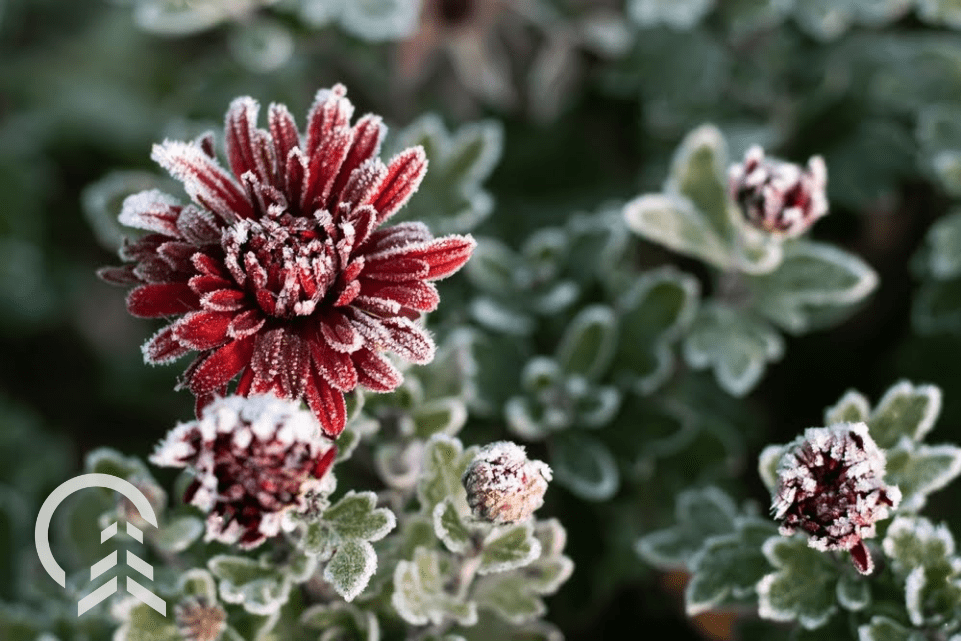When it comes to decking the halls, plants play a vital role in bringing festive cheer and natural beauty to your holiday decor. From the classic Poinsettia to the charming Norfolk Island pine, certain plants have become beloved symbols of the season. Whether you’re looking to add a touch of tradition or a splash of color, these popular Christmas plants can transform your home into a cozy winter wonderland.
1. Poinsettia
Who doesn’t love a Poinsettia basket at Christmas? Poinsettias are one of the most popular symbols of the season, and for good reason! These attractive plants have dark green leaves and attractive, colorful bracts that change colors as the days get shorter. Poinsettias come in a range of colors. At Platt Hill Nursery, we carry a huge variety including white, pink, rose, variegated – even orange! Poinsettia care is relatively easy. Some tips:
- Place in a location where the plant will receive bright daylight
- Avoid storing your poinsettia in a location that drops below 50 degrees Fahrenheit
- Keep the soil moist and water when the soil feels dry
2. Christmas Cactus
Christmas cactus plants bloom at (you guessed it) Christmas! These lovely succulents produce blooms that are ready to open right in time for the holidays. Christmas cacti produce exotic flowers in a range of colors including white, red, and pink. Christmas cactus care is easy, but it’s important to store your Christmas cactus in conditions appropriate for blooming.
- Place your Christmas cactus in bright, indirect sunlight
- Choose a humid location like a bathroom
- Water when the top third feels dry, then reduce watering in fall to prepare the plant for flowering
3. Amaryllis
Amaryllis is a lovely flowering bulb that produces red or white blossoms around Christmas. Amaryllis makes a nice decoration for the living room or kitchen where you can enjoy its large, attractive blossoms.
Water these flowers when the top couple of inches feel dry. Keep the bulb in well-draining soil. Fertilize regularly with houseplant fertilizer that contains a lot of phosphorus to encourage flowering. Keep the plant in direct sunlight until it starts to flower, then move to an area with less light.

4. Ivy
Grown outdoors, English ivy will form long tendrils that grow as long as you’ll let them. Indoors, English ivy is easy to train and can be regularly pruned to fit in a compact space. Ivy grows best in bright, indirect light, but will tolerate low light. Variegated varieties grown in low light will turn all green. Keep your ivy well-watered.
Ivies like humidity, but in a dry room, you can increase the humidity by setting your plant on a tray of wet pebbles. Use houseplant fertilizer when your ivy is actively growing. To promote a healthy plant, promote good air circulation by allowing tendrils space.
5. Norfolk Island Pine
Norfolk Island pines found in the wild grow in the temperate South Pacific. They make lovely houseplants, but cannot be grown outdoors in Chicago. These plants look like mini Christmas trees. Some of them look like a healthier version of the Charlie Brown Christmas tree!
Water these plants when the soil feels dry, and use fertilizer when the tree pushes out new growth. Norfolk Island pines like humidity. Placing your pine in a bathroom, near your kitchen sink, or in a group of other plants can help increase humidity. Repot your pine every three or four years, as roots become visible.
6. Frosty Fern
Frosty ferns aren’t really ferns at all, but their green leaves tipped in white do give them the appearance of being frosty. These plants like high humidity. Consider growing yours under a dome or in a terrarium. Water your frosty fern regularly. Avoid over-fertilizing as the frosty tips may turn green.
7. Candy Cane Kalanchoe
Candy Cane Kalanchoe is an attractive potted plant with beautiful, long-lasting flowers. Flowers come in colors ranging from yellow to red to pink. These flowers last a long time throughout the winter. In addition, the Candy Cane Kalanchoe also boasts attractive succulent leaves that make it an attractive plant even without blossoms.
These plants bloom regularly and reproduce easily. Grow your plants in bright light and well-draining soil. Fertilize with houseplant fertilizer and keep your Kalanchoe in a cool room for the best results.
8. Lavender and Rosemary Topiaries
1. Add Mini Ornaments: Decorate delicate houseplants with ribbons, tiny baubles, stars, and bells to add a festive touch without overwhelming your plants. Use lightweight decorations to avoid weighing down the branches.
2. Twinkle Lights: Stringing small LED fairy lights around your plants creates a warm, cozy glow. Opt for battery-operated ones to avoid visible cords.
3. Incorporate Natural Elements: Add pinecones, cinnamon sticks, or dried citrus slices for a rustic, organic feel that complements the greenery.
4. Use Festive Pots: Place existing pots inside larger decorative holiday pots in colors like red, gold, or silver. You can also wrap them in burlap or festive fabric for a seasonal touch. This makes it easy to remove the decorations after the holidays without disturbing the plants.

5. Avoid Overdoing It: Less is more when decorating houseplants. Keep it simple to maintain the plant’s health and natural beauty.
6. Rotate Decorations: If you have several plants, rotate decorations among them to give each one a chance to shine. This also keeps your decor looking fresh throughout the season.
7. Mind the Watering: Ensure decorations don’t interfere with your plant’s regular care. Keep an eye on watering and light exposure to keep your plants healthy.
Need some more Christmas plant ideas? Come stop by Platt Hill Nursery at our Carpentersville or Bloomingdale locations. Looking for a specific plant for your holiday decor or need some expert advice? Contact us today, and our knowledgeable team will be happy to help you find the perfect addition to your festive home.


